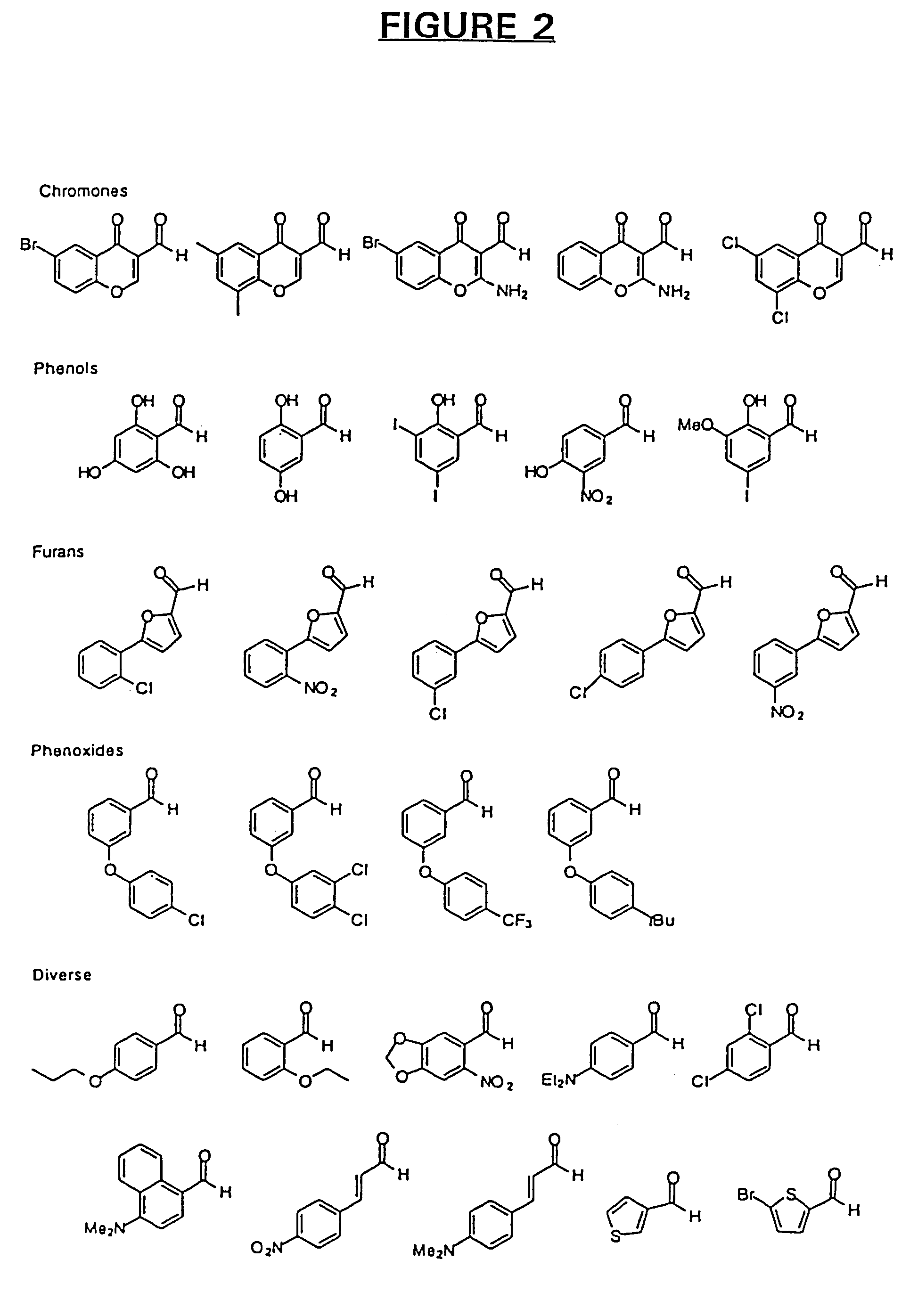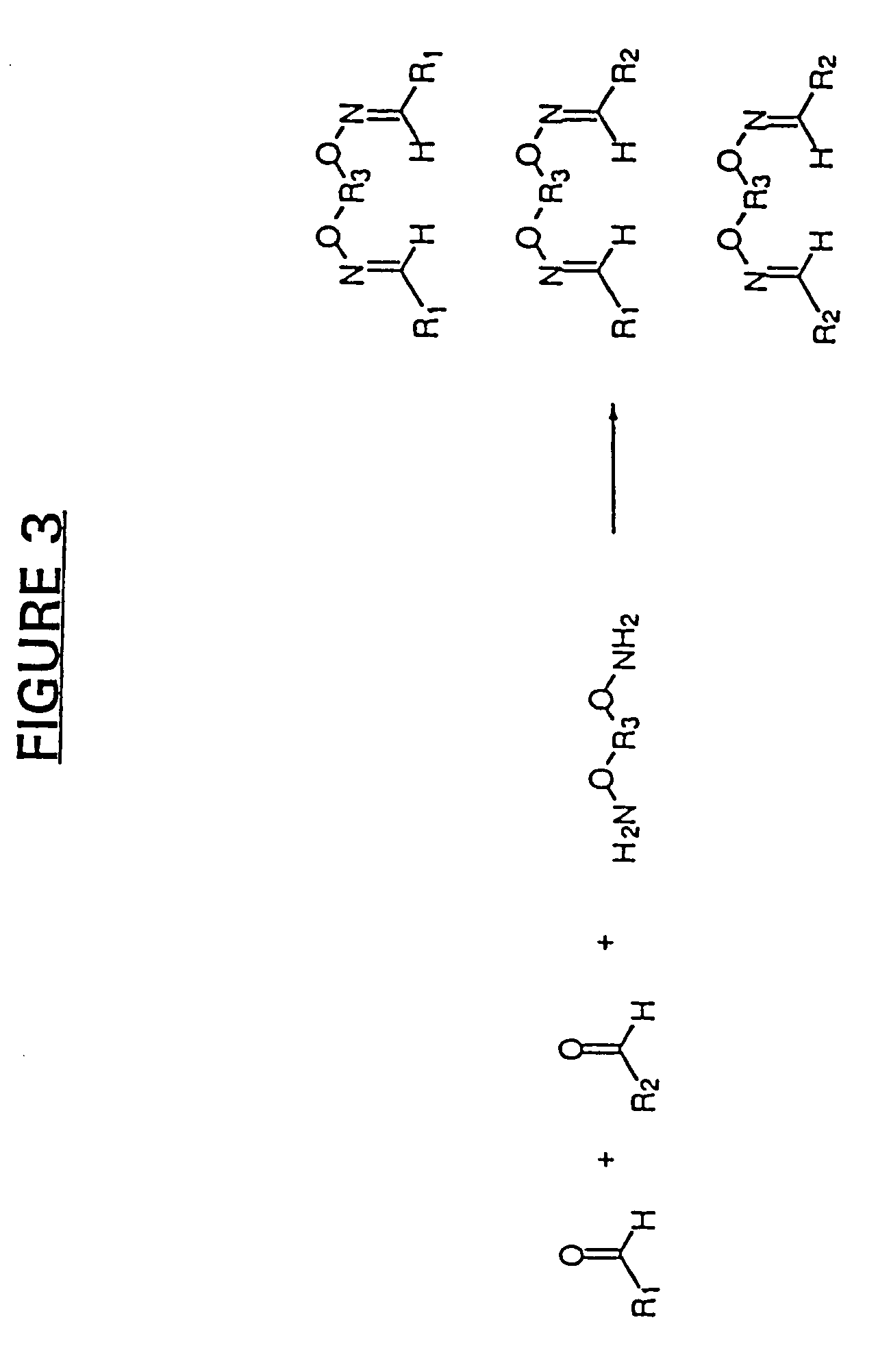Pharmacophore recombination for the identification of small molecule drug lead compounds
a lead compound and pharmacophore technology, applied in the field of new drugs, can solve the problems of difficult molecular targets such as those useful for blocking, inability to identify small molecules, and insufficient time-consuming and costly processes, and achieve the effect of rapid and efficient identification
- Summary
- Abstract
- Description
- Claims
- Application Information
AI Technical Summary
Benefits of technology
Problems solved by technology
Method used
Image
Examples
example 1
Pharmacophore Recombination for the Identification of Compounds Capable of Inhibiting the Interaction Between gp120 and CD4
[0241]To demonstrate the principle of pharmacophore recombination, we established a biochemical screen for the inhibition of gp120-CD4 binding. This assay measures the ability of small molecules to inhibit the binding of gp120 to sCD4 that is immobilized on a microtiter plate. Binding of sCD4 was quantified with an anti-gp120 antibody conjugated to horseradish peroxidase.
General Procedure for the Synthesis of an Oxime Compound Library
[0242]For several reasons, we chose to initially employ O-methyl oximes, rather than aldehydes, for the initial compound building block library. First, O-methyl oximes best model the pharmacophore units in the final oxime coupled dimers. Second, O-methyl oximes are more soluble in aqueous solution than their more hydrophobic aldehyde precursors. Also, the oxime functionality is clearly not inherently toxic and does not interfere wit...
example 2
Pharmacophore Recombination Using N,N-Dimethylamines and Other Diamine Linkers
[0273]In addition to the use of aldehydes and oximes for the pharmacophore recombination method as described above, additional chemistries also find use. In this example, the organic compound building blocks are N,N-dimethylamine compounds that are prepared by reductive amination of starting aldehydes and dimethylamine using support-bound triacetoxyborohydride (Kaldor et al., Tetrahedron Lett. 37:7193–7196 (1996)). The chemistry of these reactions is shown in FIG. 7. Removal of the support-bound reducing agent by filtration followed by concentration to remove the volatile, excess dimethylamine then provides the pure N,N-dimethylamine monomer building blocks. Alternatively, the N,N-dimethylamine building blocks may be obtained by reduction using a sodium borohydride-based reducing agent in solution. The resulting amine product is then isolated from the excess reducing agent or aldehyde by passing down an ac...
PUM
| Property | Measurement | Unit |
|---|---|---|
| molecular weights | aaaaa | aaaaa |
| molecular weights | aaaaa | aaaaa |
| molecular weight | aaaaa | aaaaa |
Abstract
Description
Claims
Application Information
 Login to View More
Login to View More - R&D
- Intellectual Property
- Life Sciences
- Materials
- Tech Scout
- Unparalleled Data Quality
- Higher Quality Content
- 60% Fewer Hallucinations
Browse by: Latest US Patents, China's latest patents, Technical Efficacy Thesaurus, Application Domain, Technology Topic, Popular Technical Reports.
© 2025 PatSnap. All rights reserved.Legal|Privacy policy|Modern Slavery Act Transparency Statement|Sitemap|About US| Contact US: help@patsnap.com



